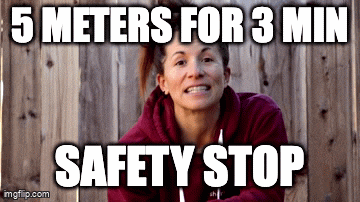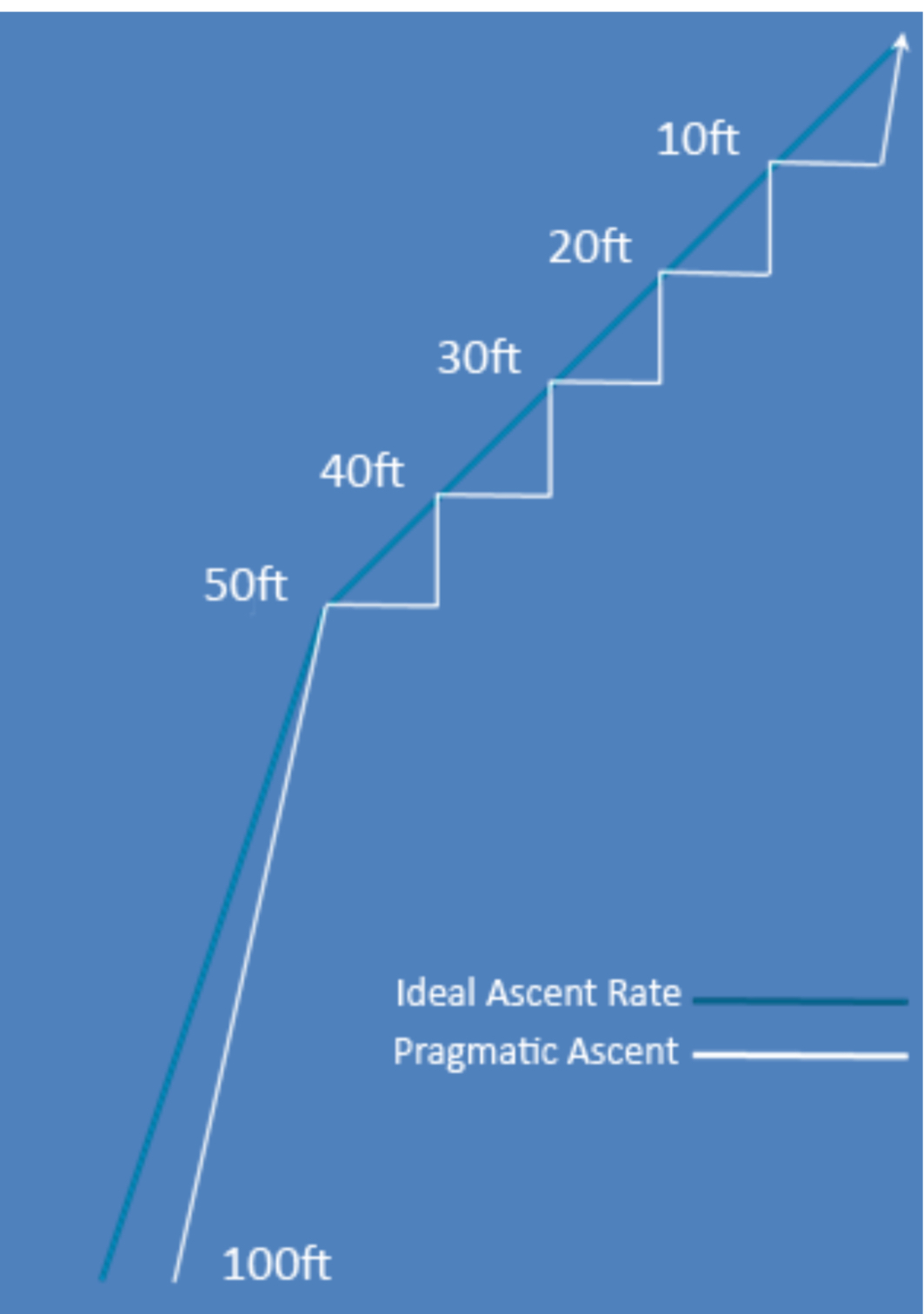Fact: EVERY dive is a decompression dive.
Fact: A safety stop IS a decompression stop.
Fact: A recreational dive is defined as a dive without a decompression obligation.
Fact: The lack of an obligation to do something does not negate what it is
If you don't believe me....
"A no-stop-dive, also known erroneously as a no-decompression dive, is a dive in which no-decompression stops are required. It is defined as a dive in which the diver can ascend directly to the surface at the recommended ascent rate without any of the tissue compartments exceeding their M-Values and hence without needing to do a decompression stop.
The term no-decompression dive is a misleading name. As we have seen every dive involves a degree of on-gassing and every ascent involved a degree of off-gassing and so decompression of some sort is required on every dive. The tissues may decompress enough on the ascent so that no additional stops are required but that does not mean they are not decompressing." - Deco For Divers, Mark Powell (page 54)
With that over....
A recreational diver generally has 3 options when it comes to conducting a decompression at the end of the dive:
- Do nothing...this was a dive within the No Decompression Limit (NDL)
- Conduct a "Safety Stop"
- Ascend using a decompression profile
The Safety Stop

For those in the Americas that use the Imperial system this is taken as "3 Minutes at 15 Feet"
You come up from whatever depth you were at no faster than 30ft per minute...and then you stop at ~15 feet and chill out for 3 minutes. It's super simple to remember, requires absolutely no thinking or planning and is probably more decompression than you actually need in most situations.
If my buddy wants to take a Safety Stop I have no problem with that...more deco the better from a risk perspective.

Decompression Ascent
This is not generally taught outside of diving agencies like GUE, who are training the recreational diver with a future technical dive in mind. The idea is that the best decompression ascent would be a gradual but consistent non-stop ascent from wherever you are to the surface. This is sometimes known as "flying the curve". However, humans suck at doing anything gradually and consistently. So to mimic this type of ascent of 10ft per minute, the ascent is broken up into 10ft segments at 1 minute a piece which, if graphed, would look like a bunch of steps going up to the surface..It typically involves the following procedure:
- Call the dive
- Ascend to 50% of the maximum depth rounded to the nearest 10ft increment and do so no faster than 30ft per min
- Signal to the team that we are beginning a 1 minute deco (pinky up then the number 1)
- Hold for 30 seconds
- Signal to the team to move up 10ft (this was discussed prior to the dive so a flat hand movement of "up a level" is sufficient)
- Move up 10 ft slowly...trying to reach the next level in 30 seconds
- Signal to the team that we are beginning the next 1 minute deco (pinky up then the number 1)
- Hold for 30 seconds
- Signal to the team to move up 10ft (this was discussed prior to the dive so a flat hand movement of "up a level" is sufficient)
- Move up 10 ft slowly...trying to reach the next level in 30 seconds
- (This repeats until you hit the surface)
THIS IS NOT THE PROCEDURE BECAUSE OF A BELIEF THAT "DEEP STOPS" ARE BETTER (WHICH RECENT RESEARCH SAYS THEY ARE NOT). IT IS INTENDED TO MIMIC A GRADUAL ASCENT...NOTHING MORE.
I prefer this ascent procedure when compared to a Safety Stop...but I generally don't get to make that decision when everyone else is more comfortable conducting a Safety Stop...and my preference is only a preference...not a rule.
